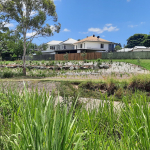Upcoming Events
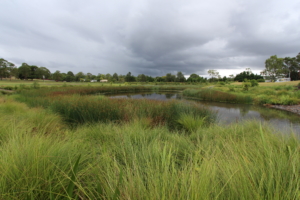
The Wetland Training course will provide an introduction to the field of wetland design for stormwater and wastewater treatment with the main themes covered including:
- An introduction to the science of wetlands and constructed wetland types
- Pollutant removal mechanisms within treatment wetlands
- Pro and cons of wetlands for differing effluent types – key things to consider or look for in a wetland design
- Design steps including relevant technical guidance
- Construction and establishment of natural systems
- A new challenge: broad scale wetlands – an application for rehabilitating landscapes and environmental offsets
The training will be supported by a selection of case studies and will have an emphasis on wetland design in the Queensland policy context. At the end of the training, participants will have a greater understanding of wetland function, the use and limitations of wetland systems and a collection of resources and materials for designing and assessing wetlands and other biological systems.
Speakers:
Damian McCann & Dr Mark Bayley, Co-Directors of Australian Wetland Consulting.
Damian is a Wetland Ecologist with over 15 years experience in the design, construction and management of wetland systems for a range of applications. Mark and has completed many projects which have involved the use of constructed wetlands for polluted water treatment, habitat creation and groundwater management.
Join Stormwater Queensland and event partners Citygreen as we discuss how Street Trees can enhance the liveability of a city and the key considerations to factor into design, application and ongoing management.
Comprising keynote presentations from leading experts, this session is an invaluable opportunity to further your knowledge and skills.
Sessions include:
Street trees changing role in the liveable city Lyndal Plant, Urban Forester
- Street trees as multifunctional green infrastructure
- Local government directions e.g. prioritising greening/cooling, canopy cover targets, urban forest resilience planning
Design requirements for optimum tree growth – Ben Gooden, Citygreen
- Target shade cover and asset values, against projected time scales, enabled by correct soil volumes/spec, water balance and species selection
- Soils Under Pavements Trials at Bartlett Labs, Charlotte NC, USA
Modelling passively irrigated trees – hydrology and pollutant removal – Sally Boer, E2Designlab
- How to model passively irrigated trees in MUSIC
- Applying the sizing guides: retrofit and greenfield case studies
Observations of the design and performance of passively irrigated street trees – Tim Davies, Environmental Engineer
- Observations and lessons learnt from different designs of passively irrigated street trees without underdrainage.
- Summary of programs including design considerations, monitoring and costs.
Event Partner

At Citygreen, we love trees. In fact, we think they hold the key to better cities – and a better world. Informed by years of comprehensive research and development, our urban landscape solutions offer the very best in cutting-edge technical design. Not only are they the strongest available by far, our structural modules are also the greenest – made from 100% recycled plastic – evidence of our commitment to the environment.
We want sustainable green space to be within reach of every person, every day – and we’re on a mission to make it happen. We hope you’ll join us on the journey.
Speakers
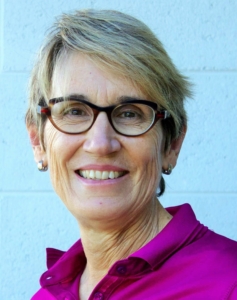
Dr. Lyndal Plant is an urban forester who has worked in local government policy and strategic planning for urban trees, including many years with Brisbane City Council. A Churchill Fellow, member of TREENET management committee and now a published researcher and consultant, Lyndal has helped advance urban forest evidence gathering techniques and make stronger business cases for investment in green infrastructure. Lyndal now focuses on policy development/review and cutting-edge urban forest initiatives. She sees the forest, not just the trees – helps plan and monitor outcomes, not just outputs and is committed to greener, cooler neighbourhoods for all.
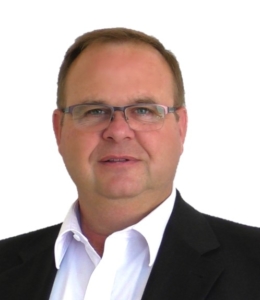
Ben Gooden is the CEO of Citygreen – innovating with sustainable urban landscape solutions, including tree vault systems, water harvesting and aeration systems, for enabling faster canopy growth. Working with most major cities in Australasia, USA and Canada, and property developers.

Sally Boer is a founding Director of E2Designlab. Her professional career has been devoted to using science to guide strategic planning and design to inform decisions that shape the creation of healthy and sustainable cities. With a background in freshwater ecology and over a decade of working with developers and local government authorities in urban water management, Sally understands the drivers and sometimes competing interests shaping on-ground outcomes. She has contributed to advancements in passive irrigation approaches and has helped successfully deliver the first large scale open space turf wicking bed in Gladstone and more recently a wicking lawn and self-watering tree for Innovation House 2.0. She also led the tree pit soil moisture modelling for Healthy Land and Water which has provided passively irrigated tree pit design guidance for six climatic zones across Queensland.

Tim Davies is an Environmental Engineer with a passion for creating resilient and regenerative landscapes. Through coupling whole systems thinking with a creative edge, he aims to be a driver of innovation and integration. Tim enjoys working at multiple scales from strategic planning to design to practical hands on landscaping and gardening.
Tim’s experience has given him a deep understanding of the planning, design, maintenance and operational aspects of Water Sensitive Urban Design. Recently, he’s been involved with several projects trialling the use of passively irrigated street trees and the rectification of bio-retention systems to reduce maintenance, improve public engagement and vegetation resilience.
Join Stormwater Queensland as we discuss Stormwater Harvesting and the role of planning, design and maintenance in its implementation.
Comprising keynote presentations from leading experts, this session is an invaluable opportunity to further your knowledge and skills.
Sessions
Chris Tanner, Regional Manager CRC for Water Sensitive Cities, discussing:
- Why consider stormwater harvesting – the big picture
- Ways to transition to an embedded stormwater harvested water supply
- What are the local scale benefits?
Alan Hoban, Director, Bligh Tanner & President, Stormwater Australia, presenting on:
- An overview of successful and not so successful stormwater harvesting schemes in Australia and what we can learn from these.
- Discuss key considerations for pre-treatment, storage, filtration and disinfection.
- Present research into how climate change affects the supply/demand balance and what this means for yields.
- Use a local case study of a current stormwater harvesting project to show how these considerations are applied in practice.
LOCAL GOVERNMENT REP, outlining:
- Presentation of real world examples of stormwater harvesting systems in use
- Do they work as intended?
- What lessons have we learned from maintaining these systems?
- What can be improved for future development of such systems?
Panel Discussion and Q&A with:
- Alexander Aronsson, Stormwater Queensland
- Chris Tanner
- Alan Hoban
- Local Government Rep. (TBC)
Event Speakers
Chris Tanner, Regional Manager CRC for Water Sensitive Cities
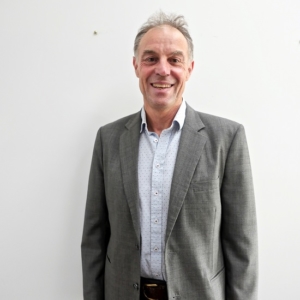
Chris Tanner is a Registered Professional Engineer, civil engineer and planner with over 30 years experience. He was a director of Bligh Tanner Consulting Engineers for 25 years leading a number of environmental engineering projects that defined a company reputation for high quality design focussed solutions with multi-dimensional benefits, integrating the built and natural environments. He is currently Regional Manager (Qld) at the CRC for Water Sensitive Cities and Adjunct Associate Professor at Advanced Water Management Centre UQ, advising industry and government on adaptive change for integrated water management.
Alan Hoban, Director, Bligh Tanner & President, Stormwater Australia

Alan is a Director of Bligh Tanner and President of Stormwater Australia. He is currently leading the development of new urban typologies for Western Sydney that enhance liveability and waterway health, and recently led the design for the naturalisation of Small Creek.
Previously, Alan helped set water sensitive urban design standards for Queensland as Executive Manager of Water by Design, and led the Flood of Ideas project following the 2011 Queensland floods. As well as this, he co-founded car-share company Flexicar.
Alan is a Fellow of the Institution of Engineers Australia, a Chartered Civil and Environmental Engineer, and a Social Leadership Australia graduate.
Join Stormwater Queensland for our next event – An introduction to the practical application of Computational Fluid Dynamics (CFD) in water engineering.
- Prices are $25/40/60 for students/members/non-members; and
- Food and first beer on us.
Guest Speaker
James Apostolidis
Senior Civil Engineer – Hydraulics and Computational Fluid Dynamics (CFD)
SQOC Surface Water Team
GHD
James is a civil engineer with 9 years of experience in the water industry, including project experience with 3D computational fluid dynamics (CFD) modelling, 2D flood studies (hydraulic and hydrologic modelling), floodplain risk management plans, wastewater network modelling, and water sensitive urban design. He has been involved in the modelling, assessment, design, construction and client communications elements of major industry projects as well as smaller private developments. Currently working as part of the Surface Water team in GHD’s Brisbane office, James has operated professionally in both the United Kingdom and Australia, in addition to delivering project work remotely for clients in the United States, Chile and New Zealand.

Queensland has some of the most beautiful and popular natural assets that drive huge economic benefits to the region. But are we doing enough to protect them? Do we actually understand what it is we are trying to protect? Have we had the reality check we need to truly understand the problem and move forward with solutions?
For that reason, Stormwater Queensland (SQ) and the International Erosion Control Association (IECA) Australasia have come together for a joint conference in 2019 to recognise the common values and purpose they share in effective land, stormwater and waterway management:
Visit the conference website at https://gems.eventsair.com/2019-ieca-sq-joint-conference/
Stormwater Modelling Workshop Using TUFLOW
The session will be facilitated by
- Chris Huxley – TUFLOW Development; and
- Ellis Symons – TUFLOW Training.
Topics will include:
Modelling Theory and Best Practice
1D pipe losses
2D Direct rainfall modelling
2D rainfall loss options and treatment of pervious fractions
2D cell size and timestep recommendations
Review of model health and stability
Modelling Tips and Tricks
Sourcing input data from the ARR datahub and BoM
Data input integrity tools
Data output utilities
2019 Release TUFLOW Stormwater Features
Demonstration of new TUFLOW features relevant to stormwater modelling. This includes items such as TUFLOW HPC Quadtree mesh refinements and integrated catchment management features.


If you are not currently a Stormwater Queensland member, apply to join today and attend this event and all other events and activitiesat the dicounted member rates, plus receive further value from your membership. Apply here
Technical Presentation
Implication of Urban Baseflow on Stormwater Management
A common characteristic of urban catchments within highly seasonal climatic regions, is the presence of a constant base flow within stormwater pipes and open drains. There can be multiple sources of this dry season flow however, natural groundwater seepage and excess irrigation within the catchment are key contributors. Our observations across Darwin and Townsville suggest that urban base flow is a significant risk which can lead to the failure of vegetated systems (in particular bioretention basins) due to over-saturation of soils and surface ponding. The goal of this investigation is to broaden our understanding of urban catchments in seasonal climates by deeply exploring what we observe and using this information to inform stormwater management responses.
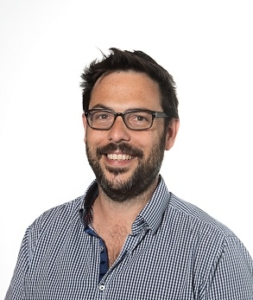
Dylan Cain is a Registered Professional Engineer of Queensland with extensive experience in the areas of Urban and Environmental Civil Engineering. Positive outcomes are important to Dylan, and he has provided an outstanding level of service to a wide range of clients from masterplan phase through to detailed design and project supervision. He has a particularly strong base of technical design ability, to integrate innovative Water Sensitive Urban Design within Standardised Civil Engineering Documentation. Dylan is also very interested in emerging trends and technology and is a participant in the CRC for Water Sensitive Cities.
Free Pizza Boards and a Free Drink on Entry
For those who couldn’t make it to Cairns for the SQ conference late last year, we’re featuring some of the highly-rated presentations, including further updates and developments. Part one is on 19 February and will feature two presentations, followed by Part two on 19 March (mark that date in your calendar) with a further two highly-rated presentations (registrations will open in a week or so for part two).
Speakers and Topics
Ocean Plastic – the pressures and solutions that (almost) no one is talking about
Brad Dalrymple, Principal Environmental Engineer; and Jeremy Brown, Co-Founder, Ocean Protect
A recent survey of 1,000 Australians nationwide demonstrated that the highest concern of all Australians with regards to population growth is marine and waterway health – ahead of housing density and traffic. The survey also found that almost six in ten (57 per cent) of Australians are not satisfied with the health and cleanliness of their waterways such as creeks, rivers, ocean. The amount of plastic in our oceans and waterways is a key and growing public concern, and it is predicted that there will be more plastic in the oceans than fish by 2050.
Ocean plastic has devastating consequences to marine life. Many marine organisms cannot distinguish common plastic items from food. Animals who eat plastic often starve because they cannot digest the plastic and it fills their stomachs, preventing them from eating real food. For example, approximately 80 percent of seabird species have plastic in their stomach, A recent study of juvenile sea turtles from around the planet also found plastic in the bellies and digestive systems in all of the 100 turtles studied.
The survey, however, also identified that Australians do not know what the largest source of this plastic pollution, with ‘stormwater runoff’ (the source of approximately 80% of marine plastic) thought to be a minor source. Within Australia, stormwater is also the primary cause of degradation in our urban waterways.
The impact of stormwater runoff within Australia is due to a combination of factors: (i) high pollution generation rates in urban areas; (ii) the vast majority of urban areas have no stormwater treatment systems; (iii) where stormwater treatment systems are integrated, these assets receive minimal (and often zero) maintenance (e.g. to remove accumulated material).
To mitigate the impact of stormwater runoff within Australian waterways (and the ocean), study authors propose a range of actions, including:
- Increased community awareness and education in relation to the primary source of ocean plastic (i.e. stormwater)
- Transition away from single use plastics, supported by appropriate education.
- Enforcement of Government legislation requiring appropriate evaluation, monitoring and maintenance of stormwater control measures (and associated reporting)
- “Zero trash to ocean” targets established across Australia, requiring (as a minimum) full capture devices for all urban areas to capture all particles less than or equal to 5mm in diameter during a typical storm.
- appropriate funding to facilitate the aforementioned recommended actions via an appropriate ‘ocean protection levy’ (or similar).
Adaptive Asset Management – a pathway to better stormwater management
Ben Penhallurick, Environmental Scientist, Renew Solutions
In Australia, governments and utilities own and manage infrastructure assets to provide services to their customers (i.e. the public). This includes assets whose management is simple and predictable like footpaths and roads. It also includes assets whose performance, outcomes, and management requirements are complex, highly variable, and not yet fully understood.
An example of a complex asset can be found in bioretention systems. The management of these assets has and continues to be a challenge for governments around Australia. In particular, governments have struggled to keep up with the maintenance required to ensure assets are kept in a good and working condition. It appears that this has been driven by the following.
- The large amounts of assets handed over to government ownership as part of urban development projects.
- The often unpredictable performance, outcomes, and management requirements of assets.
It also appears that, by and large, governments don’t undertake long-term monitoring on their assets to understand what’s required to manage them to ensure they’re performing as per design expectations and achieving desired outcomes. That is, management doesn’t appear to be evidence-based and guided by an understand of what’s happening with assets in the real world. This lack of evidence-based management may be at least partly responsible for the difficulties in maintaining assets as well as their high failure rates in the real world.
This presentation will introduce the adaptive asset management framework as a potential solution to the above. Adaptive asset management is a framework to support the evidence-based management of complex assets. It is a hybrid framework combining the core principles and processes of infrastructure asset management, used ubiquitously by governments across Australia, and adaptive management, historically used in ecosystem management for conservation purposes. The framework has been conceptualised to overcome some of the issues affecting the management of complex assets like bioretention systems including the following.
- A lack of evidence-based management owing to the absence of long-term monitoring to evaluate performance, outcomes, and management requirements in the real world.
- A lack of technology to support evidence-based management.
The presentation will provide an overview of how the adaptive asset management framework could be applied by governments in the context of bioretention systems and other complex stormwater assets. It will then present plans for a case study in South East Queensland before concluding with a discussion on the significance of the framework for the stormwater management industry.
SQ Conference – Brisbane Roadshow Part 2
For those who couldn’t make it to Cairns for the SQ conference late last year, we’re featuring some of the highly-rated presentations, including further updates and developments.
Event Sponsor – Hydrorock
The stone wool solutions help protect people, property, infrastructure and the environment from the impacts of excess water. Hydrorock Australia works with consultants, universities, local councils, property developers, landscapers, residential property owners and sporting organizations to help manage their water management challenges in an innovative and effective way.
“Keep the water where you need it the most.” That is the mission of Hydrorock Australia.
Learn More – Hydrorock Australia Brochure
Speakers and Topics
Assessing the Impact of Urban Development on On-site Stormwater Detention on Regional Hydrology
Dr Rodney Ronalds, Principal Engineer, Michael Bale & Associates
Urban development is a contributor to increased peak runoff and adverse hydrologic effects in regional catchments. On-Site Stormwater Detention (OSD) is a common way to mitigate these problems, however it is well known that OSD can have the opposite effect when it is installed at inappropriate locations. Parameter uncertainty and the need for a probabilistic approach to hydrograph generation are also factors that add to concerns regarding our reliance on OSD for the protection of regional hydrology. This study contributes to awareness of these issues and a practical solution to the problem. A hydrologic model for Monte Carlo simulation of regional catchment hydrographs has been developed using interrelated modules based on previous studies. A sample of ten regional catchments has been modelled with three simulation scenarios: i) status quo, ii) a land parcel of varying sizes is urbanised at varying locations within the regional catchment, and iii) the urbanised land parcel includes OSD. The focus on the results has been the identification and analysis of two key parameters that influence the regional catchments’ peak runoff, being the size and location of the urbanised land parcel. A regression analysis of the model results has revealed recurring patterns that have been used to develop new equations for predicting the mean impact of urbanisation and OSD on regional catchment peak runoff. The study highlights the significance of rainfall pattern uncertainty and the importance of considering land parcel location in considering the need for OSD as part of urban land development projects.
Looking Forward: considering climate change and variability in managing the Great Barrier Reef
Lisa Walpole, Water Resources Engineer, Alluvium Consulting
It is widely acknowledged that climate change is one of the greatest threat to the Great Barrier Reef (GBR). In response, the primary focus of plans, strategies and actions to date has been to increase system resilience to shocks and pressures that may be exacerbated by climate change, such as improving water quality and managing invasive species. But is this enough? Following recent, unprecedented coral bleaching and extreme runoff events, the need for action which considers the future climatic state, rather than managing the system as a static state, has become apparent and the management response is beginning to reflect this need with a new sense of urgency. This presentation explores the outcomes of an evaluation of the current GBR management response at the strategic and operational level, and opportunities for targeted management responses which better reflect the future climate state and the multiple dimensions through which climate events threaten the condition of the reef. It will also reflect on outcomes of the Great Barrier Reef Foundation investment pathways prioritisation process, and the QWMN review of how climate change and climate variability is being represented in water models across Queensland to support decision making which considers a range of future climate states.
If you are not currently a Stormwater Queensland member, you might like to consider joining SQ and attend this and all other events at the discounted member rates, along with enjoying additional value as a member – apply online now at http://stormwaterqueensland.asn.au/about/membership/ and then attend this event at the Member rate.
Topic: Looking Forward: considering climate change and variability in managing the Great Barrier Reef
Presenter: Lisa Walpole, Water Resources Engineer, Alluvium Consulting
Date: Thursday 23 April 2020
Time: 2.00pm – 2.45pm
Presentation Summary: It is widely acknowledged that climate change is one of the greatest threat to the Great Barrier Reef (GBR). In response, the primary focus of plans, strategies and actions to date has been to increase system resilience to shocks and pressures that may be exacerbated by climate change, such as improving water quality and managing invasive species. But is this enough? Following recent, unprecedented coral bleaching and extreme runoff events, the need for action which considers the future climatic state, rather than managing the system as a static state, has become apparent and the management response is beginning to reflect this need with a new sense of urgency. This presentation explores the outcomes of an evaluation of the current GBR management response at the strategic and operational level, and opportunities for targeted management responses which better reflect the future climate state and the multiple dimensions through which climate events threaten the condition of the reef. It will also reflect on outcomes of the Great Barrier Reef Foundation investment pathways prioritisation process, and the QWMN review of how climate change and climate variability is being represented in water models across Queensland to support decision making which considers a range of future climate states.
Registration: This webinar is free of charge to all. To access the Webinar, open up this link (when the meeting is ‘open’) .. https://teams.microsoft.com/l/meetup-join/19%3ameeting_MWY2ODk4ZGUtNjViYi00ZjkwLWJlZTEtMDYxODEyOThlNTk5%40thread.v2/0?context=%7b%22Tid%22%3a%2286f6a188-653f-4171-8a75-b35ab0f3509f%22%2c%22Oid%22%3a%229a302fe2-748d-4c98-8197-f39cfcdde7f9%22%7d





